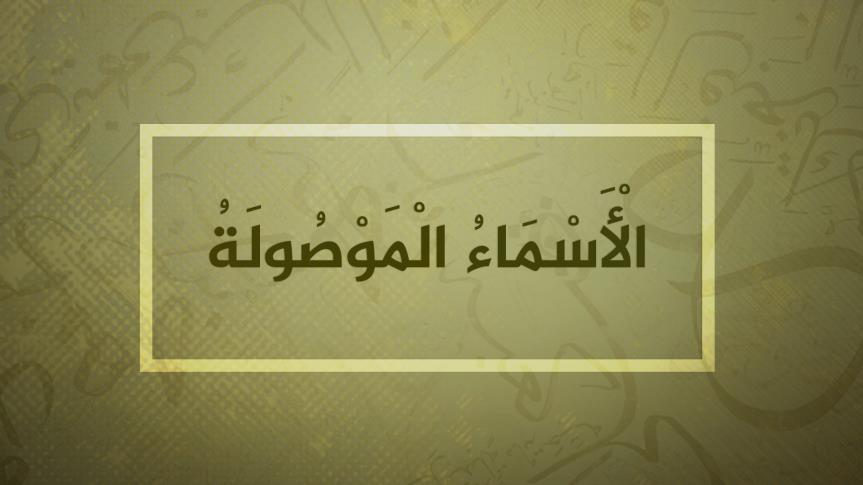الْأَسْمَاءُ الْمَوْصُولَةُ / The relative pronouns
The relative pronoun is used with what follows it to describe or define what precedes it.
EX.
فَازَ الطَّالِبُ الَّذِي اجْتَهَدَ / the student who worked hard succeeded.
Literally: (had succeeded the student (the one who) worked hard).
اجتهد + الذي (the relative + what comes after) describesالطالب (that is the antecedent).
The relative agrees with the antecedent.
Please, refer to the table below:
|
Nomber
|
Gender
|
Relative
|
Example
|
|
المفرد
singular
|
المذكر
masculine
|
الذي
Who/that/which
|
فاز الطالب الذي اجتهد
The student (mas.) who worked hard succeeded.
|
|
المؤنث
feminine
|
التي
Who/that/which
|
فازت الطالبة التي اجتهدت
The student (fem.) who worked hard succeeded.
|
|
المثنى
Dual
|
المذكر
masculine
|
اللذان/ اللذين
Those two/ who
|
فاز الطالبان اللذان اجتهدا
The two students (mas.) who worked hard succeeded.
|
|
المؤنث
feminine
|
اللتان/ اللتين
Those two/ who
|
فازت الطالبتان اللتان اجتهدتا
The two students (fem.) who worked hard succeeded.
|
|
الجمع
plural
|
المذكر
masculine
|
الذين
those who
|
فاز الطلاب الذين اجتهدو
The students (mas.) who worked hard succeeded.
|
|
المؤنث
feminine
|
اللاتي/ اللائي
Those who
|
فازت الطالبات اللاتي اجتهدن
The students (fem.) who worked hard succeeded.
|
Note that: "الَّذِينَ" and "اللَّاتِي" are used only with people. The plural of things and animals is expressed by "الَّتِي".
EX.
يُحِبُّ الأَطْفَالُ الْقِطَطَ الَّتِي تُلاعِبُهُمْ
Children like cats that play with them
هَذِهِ هِيَ الْكُتُبُ الَّتِي طَالَعْتُهَا
These are the books which I read.
